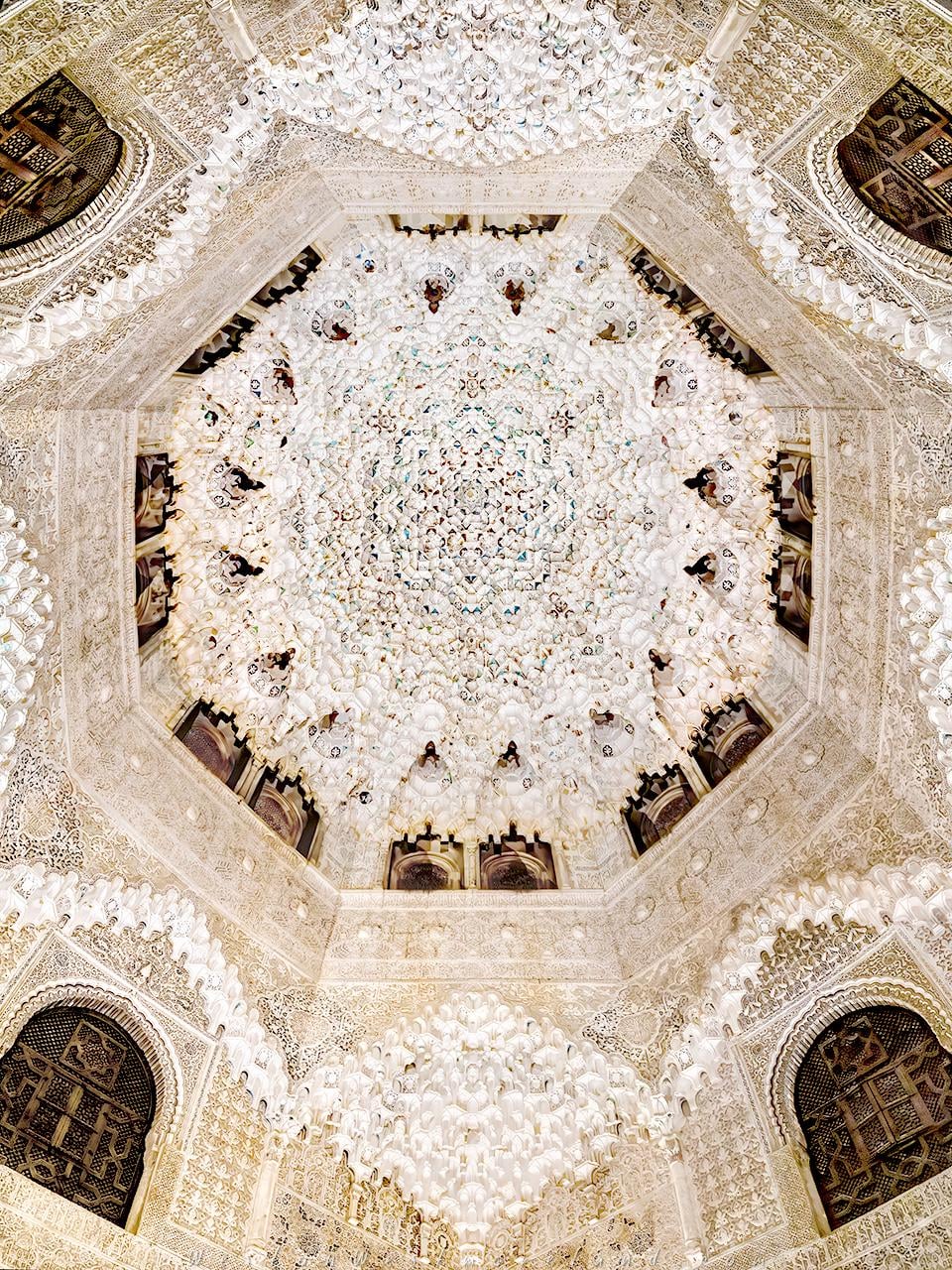
The honeycombed octogonal dome of muqarnas developed from a central star is a master work that covers the Hall of the Two Sisters, by the court of the Lions, in the Nasrid palaces of the Alhambra de Granada, the last kingdom of Al-Andalus in Spain. Built around 1350 AD… [1280×853]
by WestonWestmoreland

1 Comment
…The Hall of the Two Sisters, the second main chamber of the Palace of the Lions, is structurally similar to that of the Hall of the Abencerrages. It is situated above the court, where the only entrance is located, the wooden door of which is lavishly decorated with geometric shapes.
Upon entering the hall several corridors to the left and the right lead respectively to the upper floor rooms and to the residence lavatory. The name is derived from the setting where two large marble flagstones lie with a small fountain in between from which water flows along a canal to the Court of the Lions.
The tiled socle, the most peculiar of its sort in the Alhambra, is a lovely geometrical composition consisting of variously colored interwoven laces.
In characteristically Nasrid fashion, the plasterwork decoration is divided into large stretches, separated by inscriptions covering the walls, and culminating in the masterfully executed stalactite dome with its star in the centre and highly ornamented carved stucco in honor of Pythagoras’ well-known theorem.
To the sides of the square-shaped hall, two alcoves can be reached. Exquisitely embellished with handcrafted wood designs, both have room enough for a dais or a bed.
The Nasrid Palaces and gardens in the Alhambra express the apex of Nasrid architecture in the twilight of the Islamic dominion of the Iberian peninsula. In this palaces Nasrid art achieved its greatest degree of magnificence, sensitivity and harmony. Light, water, color and exquisite decoration turn this palace into a pleasure for the senses. The abstract and geometric decoration steps back in this palace for a more naturalistic style, considered by some as the result of centuries of interchange with Christian cultures.
A place of breathtaking beauty, preserved by the wisdom of a Sultan who was later labelled a coward for surrendering the fortress before it was utterly destroyed in a fight he could not possibly win. I for one am grateful (allow me the personal opinion).